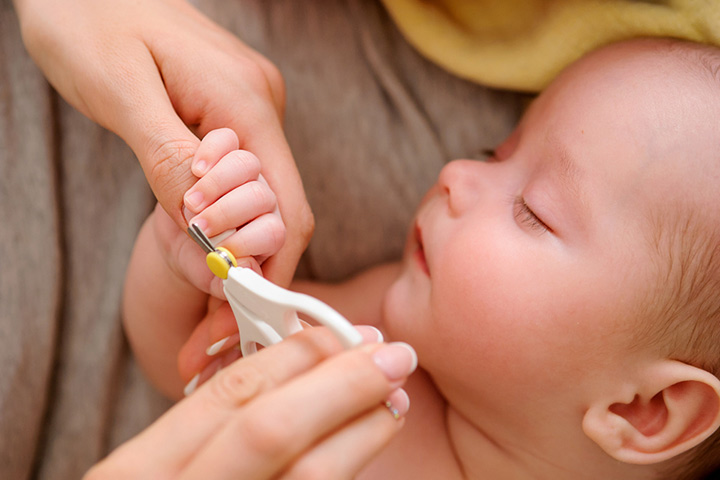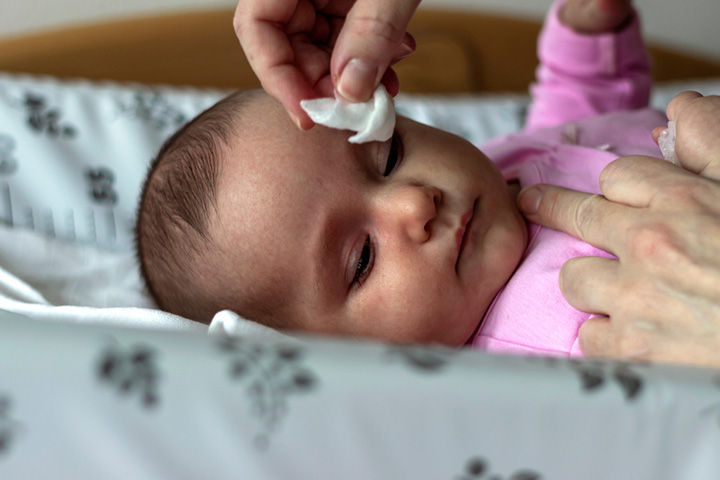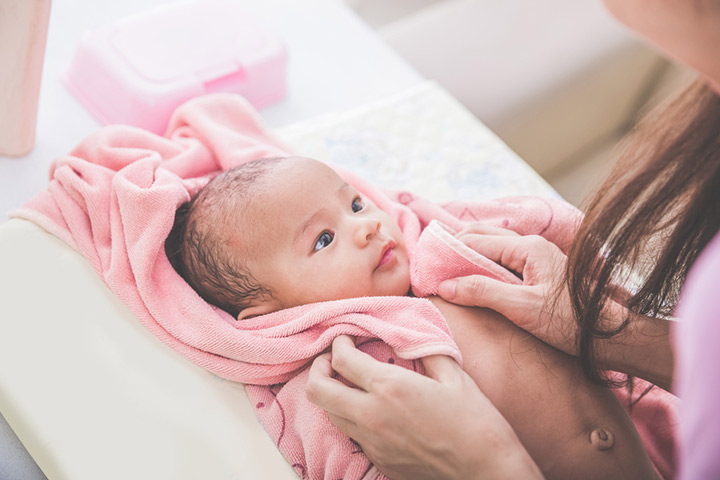
Image: Shutterstock
There is no doubt that your bundle of joy is the cutest thing out there — but they need a good cleaning routine to amplify all that cuteness! Babies are entirely dependent on their parents or caretakers — this makes it essential for you to be careful about their cleaning routine, so you do a good job.
There are a few things that you should include in your baby’s cleaning routine so your baby is fresh, clean, and healthy! Read on to find out what your newborn’s cleaning routine should look like:
1. Cleaning And Caring For The Umbilical Cord
When your baby was in your womb, the umbilical cord was responsible for keeping the little one nourished and healthy. Soon after your baby’s arrival, the umbilical cord doesn’t have much use, so it dries and falls off on its own. It usually takes a week or two before that happens. Meanwhile, until it completely dries and falls, you need to take good care of what’s left of the umbilical cord and the surrounding regions (1).
Each time you change your baby’s diaper, make sure you use a clean, slightly damp cloth to clean the little one’s tummy area gently. You can then use a dry tissue to dab this region. When you put your child’s diaper on, make sure that it is below the umbilical cord, as it should be open and left to dry, not covered within the diaper. Covering it with the diaper can hinder the healing process and lead to infections. It is normal for the cord to get wet during bath time, but ensure that you dry it quickly after bathing with a soft and dry cloth. Some doctors recommend a powder with antiseptic properties for faster healing — you can apply some of this soon after their bath (2).
2. Cleaning Your Baby’s Nails
Image: Shutterstock
Cleaning and trimming your baby’s nails should be a part of your newborn’s cleaning routine. When fingernails and toenails are not trimmed and cleaned, there are chances that your child scratches or hurts themselves. It can also be unhygienic and lead to infections when dirt and grime are stuck beneath the nails and make their way into your baby’s mouth, eyes, or nose. It is best to use a nail clipper specifically designed for babies instead of adult ones, as the latter may harm your child. Once you have trimmed your baby’s nails, use the filing side so you can buffer the sharp edges. Do not try biting your baby’s nails yourself, and it can hurt your child, break the skin barrier, or spread germs and bacteria (3).
3. Cleaning Your Baby’s Eyes
Image: Shutterstock
Just like us adults, your baby too can get goo or crust in the sides of their eyes. First, start with the inner corner of their eyes near their nose. Do not use your fingers or nails to scrape this — you can hurt your baby in the process. Instead, use a wet cotton ball or a clean, soft cloth to dab their eyes gently. Once done, work your way to the outer corners of their eyes. Ensure that you wash your hands before cleaning their eyes (4).
4. Cleaning Your Baby’s Mouth
Image: Shutterstock
With their million-dollar smile and toothless grin, it can be hard to believe that their sweet mouths are a breeding ground for bacteria and germs — but it is true. Make sure you clean their gums gently with a soft and damp cloth. Once the chompers arrive, you can use a baby-friendly toothbrush with soft bristles to brush them daily (5).
5. Bathing Your Baby
Image: Shutterstock
It is best to give your baby their first bath only after a week or two after birth, as during this time, your baby will be covered in vernix caseosa. It is a white substance that acts as a barrier of protection for your baby and helps ward off germs and bacteria. It also keeps your baby’s skin moisturized. It takes a week to ten days for this layer to slough off on its own, after which you can start bathing your baby (6).
For a month after their first bath, stick to a sponge bath for your baby. Once your baby has turned a month and a half or two months old, you can start giving them a proper bath with water and baby soap. You can either use a baby bathtub or place them between your legs and gently pour water over them. Ensure the water is lukewarm, and the soap you use is fragrance-free and chemical-free. Limiting these immersive baths to once or twice a week is best.
6. Cleaning Your Baby’s Private Parts
Image: Shutterstock
Your baby’s private parts need to be clean at all times, given how they are exposed to poop and urine most times during the day. Clean the area with warm water and gentle soap, and then wipe it with a soft and clean cloth. When cleaning a baby girl’s genitals, make sure you always wipe from front to back. If you notice a rash, ask your doctor for a gel or cream to apply once you have cleaned the area.
7. Scalp Care
Image: Shutterstock
Your baby’s scalp is very tender in the first few weeks of their life. To clean your baby’s scalp, you can begin with a gentle massage. Invest in store-bought baby oil for this, after which you can proceed to clean your baby’s hair and scalp with shampoo. Ensure that the shampoo you use is chemical-free and fragrance-free. A lot of baby shampoos also come with a “tear-free” label so that they won’t burn your baby’s eyes.
Make sure you take good care of yourself as well — it is essential for the parent or caretaker to be clean, so they don’t spread germs to their baby. What does your newborn’s cleaning routine look like? Is there more you’d like to add to our list? Share them with us in the comments below!


















